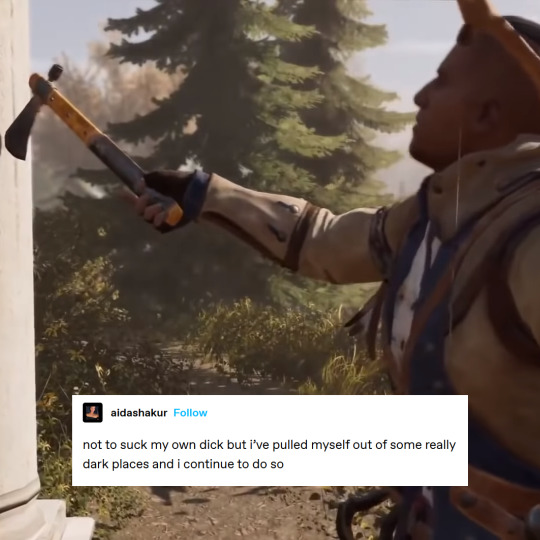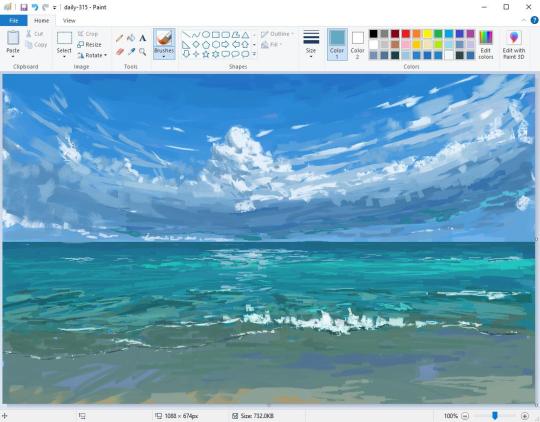Pronouns are he/him, they/them. English is not my first language. FOLLOW AT YOUR OWN RISK I AM REALLY STUPID AND SHITPOST ALOT WITHOUT A CARE IN THE WORLD
Don't wanna be here? Send us removal request.
Text

"You will become a symbol to those who survive. Hope. Knowledge. Determination. You will inspire them to rebuild, to thrive once more. ... For now, you must follow."
307 notes
·
View notes
Photo




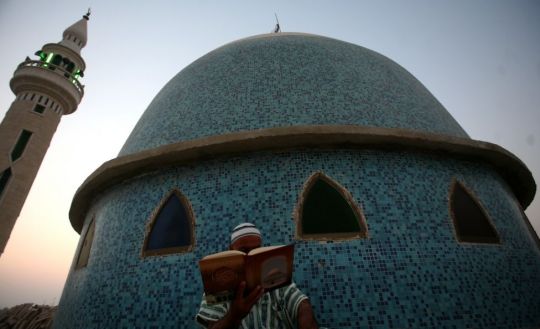

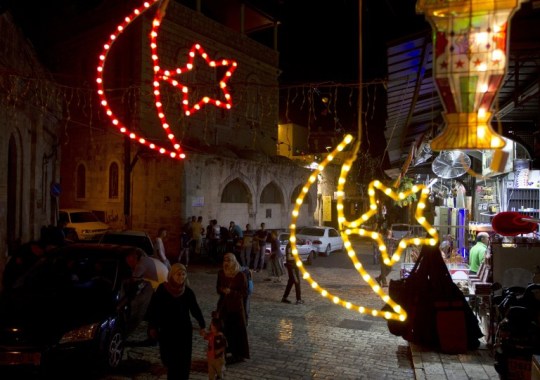

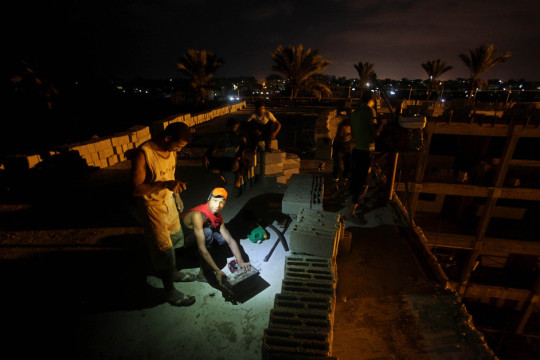
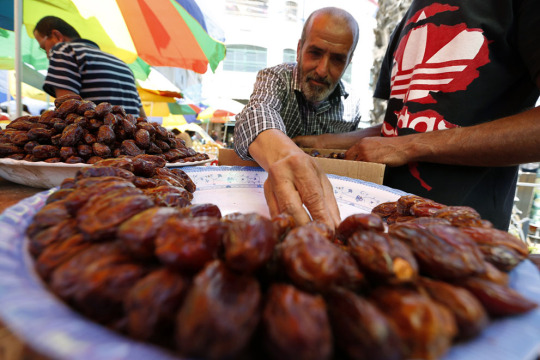
“Ramadan Kareem, from Palestine”
1. Bethlehem, West Bank: A Palestinian child stands among Palestinian women as they attempt to pass the checkpoint on their way to pray at the al-Aqsa mosque on Ramadan. (Bernat Armangue/AP)
2. Palestinian musicians perform in Jerusalem’s Old City during celebrations to mark the breaking of the fast on the seventh day of the month of Ramadan.(Mahfouz Abu Turk / APA images)
3. Israeli border police check the IDs of Palestinian women at Qalandiya checkpoint outside the occupied West Bank city of Ramallah on the second Friday of Ramadan.(Issam Rimawi / APA images)
4. Palestinian worshippers pray in front of Dome of the Rock near al-Aqsa Mosque in Jerusalem’s Old City during the month of Ramadan, 25 July 2013 (Mahfouz Abu Turk / APA images)
5. A Palestinian man reads the Quran outside a mosque in the West Bank city of Jenin on the first day of the Muslim holy fasting month of Ramadan. (SAIF DAHLAH - AFP/Getty Images)
6. A Palestinian boy looks at a traditional Ramadan lantern in a street market in Gaza City, on July 6, 2013. (Mohammed Abed/AFP/Getty Images)
7. Palestinian women walk past Ramadan decorations, in the old city of Jerusalem on as people prepare for the upcoming Muslim holy fasting month of Ramadan. (Ahmad Gharabli/AFP/Getty Images)
8. Palestinians break their day-long fast during a charity iftar feast outside the golden Dome of the Rock in the Al-Aqsa Mosque compound in Jerusalem. (AFP/Ahmad Gharabli)
9. Palestinian construction workers work at night in Deir al-Balah, central Gaza Strip. Laborers work during the night in the month of Ramadan because of the high temperatures during the day when they are fasting and cannot drink any water. (Ashraf Amra / APA images)
10. A Palestinian arranges dates for sale on the first day of Ramadan in a market in the West Bank city of Ramallah. (Reuters/Mohamad Torokman)
244 notes
·
View notes
Text
How to Critically Analyze a Piece of Media
By Deniigiq (Almost Ph.D)
So as a person who has spent the last 5+ years working in higher education in both research and staff capacities, I feel that it is my responsibility to provide y’all with some tools to help you critically analyze shit that you come across so that you don’t end up guilt tripping yourselves and others around you 24/7.
I am writing this because I see people constantly saying that people no longer know how to critically analyze something or don’t have critical thinking skills, but very few people actually have the time/energy/obligation to break down what that actually means and looks like for others.
The good news is that I apparently do have the time, energy, and honestly, the genuine concern to start to help people do that.
This is going to be a long-ass post.
I am not sorry.
It is not comprehensive.
I am not sorry for that either. This is just a tiny taste of some shit that you can and should really go ham with.
So anyways, here’s how to critically analyze a piece of media.
Critically analyze = asking questions of a text/media/object and thinking about answers to those questions.
THAT’S IT, PEOPLE.
THAT’S ALL. Don’t make it more complicated at this point in time.
Here are some basic questions that you want to ask yourself about a text/media/object (hereafter referred to as a Thing) before, after, and during your consumption of it:
When was this made?
The period in which a Thing is made is important because the world during that particular point in time influences the decisions that went into producing the Thing.
Why was this made?
This question has layers. You will find many answers to this question if you pose it to anything that exists ever. And it should have multiple reasons because humans give many different meanings to individual things. There are often very few absolutely right answers to this question.
Who made this thing?
The layered identities of the people who create a Thing are always present in it. The important part is that if a person creates a Thing, then that Thing will have both insights into that person’s perspectives/beliefs/values/identity AND the limitations of those perspectives/beliefs/values/identity.
What ideas does this Thing include and what ideas does this Thing leave out?
This is a really basic question that you probably don’t think of to ask yourself often, but when you are presented with a Thing, you have to first identity what is literally there right in front of you (example: this is a movie about a superhero. The superhero is a tall, beefy white man. The tall beefy white man has 2 sidekicks. And so on and so on.)
THEN, once you’ve done that, you sit back and think about what is NOT there. (The tall beefy white man’s sidekicks are both white characters. None of them are woman. None of them are people of color. And so on and so on.)
Once you get to this point in your analysis, you start asking different questions about the Thing.
For each answer you come up with to the above questions, you ask yourself:
1. Why?
and
2. How?
Some questions you may find yourself making at this point include:
Why was this Thing done in this way?
Why does this Thing have that audience?
How does this aspect of the Thing affect this other aspect of it?
Why did the person who made this Thing choose to do it X-way and not Y-way?
How might the time and place this Thing was made in affect its creation?
So you may be saying to yourself at this point, “but Matt, this doesn’t sound very critical to me! This just sounds like a load of fucking questions.”
To which I will say: thank god you have finally understood, padawan.
Being critical of something does not mean that you or someone else hates it.
It does not mean that you or someone else thinks the Thing is worthless.
It does not mean that you or someone else hates the people who made the Thing or the people who like the Thing.
It simply means that you have asked questions about the Thing and have recognized what it is, what it is doing, and what it is not doing from a variety of different perspectives.
So that means that when someone comes to you and says, ‘this Thing is having X effect on its audience,�� ‘this part of this Thing is representing X idea in Y ways,’ or ‘this Thing is leaving X people out in its story, which has Y effects’ that ‘criticism’ isn’t actually a targeted attack on you as a person.
This is because Things are not personality traits. Fandom ideas and ships and headcanons and whatever else are not what makes you you. You are special and unique because of so many other things that you do and have experienced. The thing that you like does not make up the entirety of your person or identity, even if that Thing or hell, even if a specific person has a lot of emotional value to you.
And because of that, when someone criticizes a piece of media or an object, they are not criticizing you. Rather, they are explaining to you how a Thing is functioning through a lens that you often don’t have access to or haven’t thought of.
That’s all!
That’s it, folks!
And just so that we are clear, you can absolutely like a Thing after going through this process and finding that it has all sorts of limitations.
You may find that there’s a lot of shit about a bit of media/fandom/object that you don’t like, and you might decide that that shit outweighs the things you do like about whatever it is.
And regardless of the case, you are MORE than allowed to continue to consume a bit of media or whatever and say, ‘you know what? I enjoy this for a number of reasons. And I also acknowledge that there are parts of it that are not good for a number of other reasons. So now when I have fun with this Thing, I’m going to be aware of and sensitive to those less great parts, while also celebrating the good parts of it, too.’
That’s totally fine. In fact, that’s great. That’s amazing. That’s the kind of awareness that people are asking you to have when they ask for critical analysis.
So. In conclusion:
Critical analysis is a tool that helps you think beyond the surface layer of an idea/thing/object. Being asked to think critically is not an attack. It does not mean that you cannot enjoy something or let it occupy an important place in your heart.
Critical analysis is a tool for everyone to use, and it is intended to help you understand how an idea/thing/object relates both to itself and the world around it.
What you do with critical analysis after that point is all up to your values and morals.
Anyways, if you have more questions, please don’t ask me. Ask yourself and then ask Google for more information or what to do next. That’s a whole different process called ‘researching’ and no one is paying me to teach you all how to research next. (…UNLESS???)
3K notes
·
View notes
Text
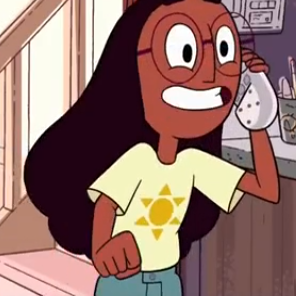
i cant believe connie is a filthy homestuck
311K notes
·
View notes
Text

in all timelines in all possibilities only you can show me this
65K notes
·
View notes
Text

in all timelines in all possibilities only you can show me this
65K notes
·
View notes
Text
IM LOSING MY MIND?? WHERE DID THE BREAD COME FROM. WHY IS IT SIDEWAYS. WHAT IS HAPPENING
72K notes
·
View notes
Text
big pharma will try to sell u $20 cold medicine like spicy ramen doesnt cost like a dollar a pack and orgasms are free
133K notes
·
View notes
Text
Apparently I badly want to go on my “stop making fun of plague doctors, they were ahead of their time and doing the best they could with the primitive equipment they had available” rant.
120K notes
·
View notes
Text
Love how Ratonhnhaké:ton is actually a controversial character in other apps and then in Tumblr he's basically just
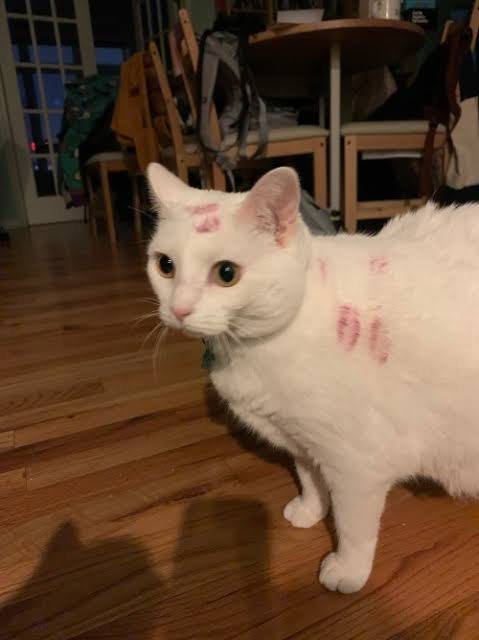
699 notes
·
View notes
Text
128K notes
·
View notes
Text
Planet's Fucked: What Can You Do To Help? (Long Post)
Since nobody is talking about the existential threat to the climate and the environment a second Trump term/Republican government control will cause, which to me supersedes literally every other issue, I wanted to just say my two cents, and some things you can do to help. I am a conservation biologist, whose field was hit substantially by the first Trump presidency. I study wild bees, birds, and plants.
In case anyone forgot what he did last time, he gagged scientists' ability to talk about climate change, he tried zeroing budgets for agencies like the NOAA, he attempted to gut protections in the Endangered Species Act (mainly by redefining 'take' in a way that would allow corporations to destroy habitat of imperiled species with no ramifications), he tried to do the same for the Migratory Bird Treaty Act (the law that offers official protection for native non-game birds), he sought to expand oil and coal extraction from federal protected lands, he shrunk the size of multiple national preserves, HE PULLED US OUT OF THE PARIS CLIMATE AGREEMENT, and more.
We are at a crucial tipping point in being able to slow the pace of climate change, where we decide what emissions scenario we will operate at, with existential consequences for both the environment and people. We are also in the middle of the Sixth Mass Extinction, with the rate of species extinctions far surpassing background rates due completely to human actions. What we do now will determine the fate of the environment for hundreds or thousands of years - from our ability to grow key food crops (goodbye corn belt! I hated you anyway but), to the pressure on coastal communities that will face the brunt of sea level rise and intensifying extreme weather events, to desertification, ocean acidification, wildfires, melting permafrost (yay, outbreaks of deadly frozen viruses!), and a breaking down of ecosystems and ecosystem services due to continued habitat loss and species declines, especially insect declines. The fact that the environment is clearly a low priority issue despite the very real existential threat to so many people, is beyond my ability to understand. I do partly blame the public education system for offering no mandatory environmental science curriculum or any at all in most places. What it means is that it will take the support of everyone who does care to make any amount of difference in this steeply uphill battle.
There are not enough environmental scientists to solve these issues, not if public support is not on our side and the majority of the general public is either uninformed or actively hostile towards climate science (or any conservation science).
So what can you, my fellow Americans, do to help mitigate and minimize the inevitable damage that lay ahead?
I'm not going to tell you to recycle more or take shorter showers. I'll be honest, that stuff is a drop in the bucket. What does matter on the individual level is restoring and protecting habitat, reducing threats to at-risk species, reducing pesticide use, improving agricultural practices, and pushing for policy changes. Restoring CONNECTIVITY to our landscape - corridors of contiguous habitat - will make all the difference for wildlife to be able to survive a changing climate and continued human population expansion.
**Caveat that I work in the northeast with pollinators and birds so I cannot provide specific organizations for some topics, including climate change focused NGOs. Scientists on tumblr who specialize in other fields, please add your own recommended resources. **
We need two things: FUNDING and MANPOWER.
You may surprised to find that an insane amount of conservation work is carried out by volunteers. We don't ever have the funds to pay most of the people who want to help. If you really really care, consider going into a conservation-related field as a career. It's rewarding, passionate work.
At the national level, please support:
The Nature Conservancy
Xerces Society for Invertebrate Conservation
Cornell Lab of Ornithology (including eBird)
National Audubon Society
Federal Duck Stamps (you don't need to be a hunter to buy one!)
These first four work to acquire and restore critical habitat, change environmental policy, and educate the public. There is almost certainly a Nature Conservancy-owned property within driving distance of you. Xerces plays a very large role in pollinator conservation, including sustainable agriculture, native bee monitoring programs, and the Bee City/Bee Campus USA programs. The Lab of O is one of the world's leaders in bird research and conservation. Audubon focuses on bird conservation. You can get annual memberships to these organizations and receive cool swag and/or a subscription to their publications which are well worth it. You can also volunteer your time; we need thousands of volunteers to do everything from conducting wildlife surveys, invasive species removal, providing outreach programming, managing habitat/clearing trails, planting trees, you name it. Federal Duck Stamps are the major revenue for wetland conservation; hunters need to buy them to hunt waterfowl but anyone can get them to collect!
THERE ARE DEFINITELY MORE, but these are a start.
Additionally, any federal or local organizations that seek to provide support and relief to those affected by hurricanes, sea level rise, any form of coastal climate change...
At the regional level:
These are a list of topics that affect major regions of the United States. Since I do not work in most of these areas I don't feel confident recommending specific organizations, but please seek resources relating to these as they are likely major conservation issues near you.
PRAIRIE CONSERVATION & PRAIRIE POTHOLE WETLANDS
DRYING OF THE COLORADO RIVER (good overview video linked)
PROTECTION OF ESTUARIES AND SALTMARSH, ESPECIALLY IN THE DELAWARE BAY AND LONG ISLAND (and mangroves further south, everglades etc; this includes restoring LIVING SHORELINES instead of concrete storm walls; also check out the likely-soon extinction of saltmarsh sparrows)
UNDAMMING MAJOR RIVERS (not just the Colorado; restoring salmon runs, restoring historic floodplains)
NATIVE POLLINATOR DECLINES (NOT honeybees. for fuck's sake. honeybees are non-native domesticated animals. don't you DARE get honeybee hives to 'save the bees')
WILDLIFE ALONG THE SOUTHERN BORDER (support the Mission Butterfly Center!)
INVASIVE PLANT AND ANIMAL SPECIES (this is everywhere but the specifics will differ regionally, dear lord please help Hawaii)
LOSS OF WETLANDS NATIONWIDE (some states have lost over 90% of their wetlands, I'm looking at you California, Ohio, Illinois)
INDUSTRIAL AGRICULTURE, esp in the CORN BELT and CALIFORNIA - this is an issue much bigger than each of us, but we can work incrementally to promote sustainable practices and create habitat in farmland-dominated areas. Support small, local farms, especially those that use soil regenerative practices, no-till agriculture, no pesticides/Integrated Pest Management/no neonicotinoids/at least non-persistent pesticides. We need more farmers enrolling in NRCS programs to put farmland in temporary or permanent wetland easements, or to rent the land for a 30-year solar farm cycle. We've lost over 99% of our prairies to corn and soybeans. Let's not make it 100%.
INDIGENOUS LAND-BACK EFFORTS/INDIGENOUS LAND MANAGEMENT/TEK (adding this because there have been increasing efforts not just for reparations but to also allow indigenous communities to steward and manage lands either fully independently or alongside western science, and it would have great benefits for both people and the land; I know others on here could speak much more on this. Please platform indigenous voices)
HARMFUL ALGAL BLOOMS (get your neighbors to stop dumping fertilizers on their lawn next to lakes, reduce agricultural runoff)
OCEAN PLASTIC (it's not straws, it's mostly commercial fishing line/trawling equipment and microplastics)
A lot of these are interconnected. And of course not a complete list.
At the state and local level:
You probably have the most power to make change at the local level!
Support or volunteer at your local nature centers, local/state land conservancy non-profits (find out who owns&manages the preserves you like to hike at!), state fish & game dept/non-game program, local Audubon chapters (they do a LOT). Participate in a Christmas Bird Count!
Join local garden clubs, which install and maintain town plantings - encourage them to use NATIVE plants. Join a community garden!
Get your college campus or city/town certified in the Bee Campus USA/Bee City USA programs from the Xerces Society
Check out your state's official plant nursery, forest society, natural heritage program, anything that you could become a member of, get plants from, or volunteer at.
Volunteer to be part of your town's conservation commission, which makes decisions about land management and funding
Attend classes or volunteer with your land grant university's cooperative extension (including master gardener programs)
Literally any volunteer effort aimed at improving the local environment, whether that's picking up litter, pulling invasive plants, installing a local garden, planting trees in a city park, ANYTHING. make a positive change in your own sphere. learn the local issues affecting your nearby ecosystems. I guarantee some lake or river nearby is polluted
MAKE HABITAT IN YOUR COMMUNITY. Biggest thing you can do. Use plants native to your area in your yard or garden. Ditch your lawn. Don't use pesticides (including mosquito spraying, tick spraying, Roundup, etc). Don't use fertilizers that will run off into drinking water. Leave the leaves in your yard. Get your school/college to plant native gardens. Plant native trees (most trees planted in yards are not native). Remove invasive plants in your yard.
On this last point, HERE ARE EASY ONLINE RESOURCES TO FIND NATIVE PLANTS and LEARN ABOUT NATIVE GARDENING:
Xerces Society Pollinator Conservation Resource Center
Pollinator Pathway
Audubon Native Plant Finder
Homegrown National Park (and Doug Tallamy's other books)
National Wildlife Federation Native Plant Finder (clunky but somewhat helpful)
Heather Holm (for prairie/midwest/northeast)
MonarchGard w/ Benjamin Vogt (for prairie/midwest)
Native Plant Trust (northeast & mid-atlantic)
Grow Native Massachusetts (northeast)
Habitat Gardening in Central New York (northeast)
There are many more - I'm not familiar with resources for western states. Print books are your biggest friend. Happy to provide a list of those.
Lastly, you can help scientists monitor species using citizen science. Contribute to iNaturalist, eBird, Bumblebee Watch, or any number of more geographically or taxonomically targeted programs (for instance, our state has a butterfly census carried out by citizen volunteers).
In short? Get curious, get educated, get involved. Notice your local nature, find out how it's threatened, and find out who's working to protect it that you can help with. The health of the planet, including our resilience to climate change, is determined by small local efforts to maintain and restore habitat. That is how we survive this. When government funding won't come, when we're beat back at every turn trying to get policy changed, it comes down to each individual person creating a safe refuge for nature.
Thanks for reading this far. Please feel free to add your own credible resources and organizations.
19K notes
·
View notes
Text
When your Character...
Gets into: A Fight ⚜ ...Another Fight ⚜ ...Yet Another Fight
Hates Someone ⚜ Kisses Someone ⚜ Falls in Love
Calls Someone they Love ⚜ Dies / Cheats Death ⚜ Drowns
is...
A Child ⚜ Interacting with a Baby/Child ⚜ A Genius ⚜ A Lawyer
Beautiful ⚜ Dangerous ⚜ Drunk ⚜ Injured ⚜ Shy
needs...
A Magical Item ⚜ An Aphrodisiac ⚜ A Fictional Poison
To be Killed Off ⚜ To Become Likable ⚜ To Clean a Wound
To Find the Right Word, but Can't ⚜ To Say No ⚜ A Drink
loves...
Astronomy ⚜ Baking ⚜ Cooking ⚜ Cocktails ⚜ Food ⚜ Oils
Dancing ⚜ Fashion ⚜ Gems ⚜ Mythology ⚜ Numbers
Roses ⚜ Sweets ⚜ To Fight ⚜ Wine ⚜ Wine-Tasting ⚜ Yoga
has/experiences...
Allergies ⚜ Amnesia ⚜ Bereavement ⚜ Bites & Stings ⚜ Bruises
Caffeine ⚜ CO Poisoning ⚜ Color Blindness ⚜ Food Poisoning
Injuries ⚜ Jet Lag ⚜ Mutism ⚜ Pain ⚜ Poisoning
More Pain & Violence ⚜ Viruses ⚜ Wounds
[these are just quick references. more research may be needed to write your story...]
26K notes
·
View notes



